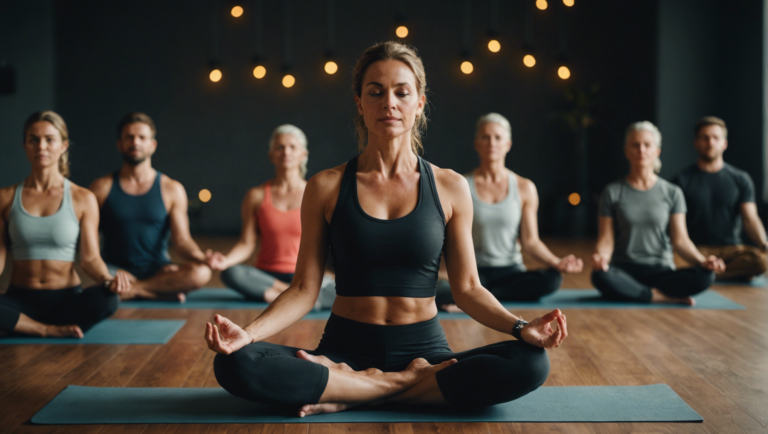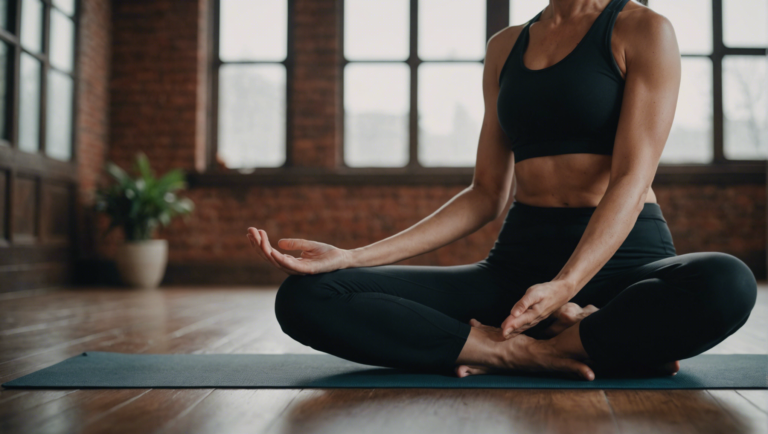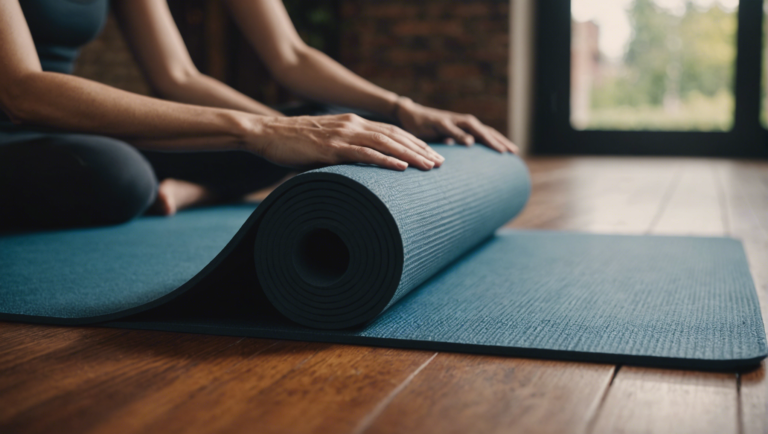Essential Guidelines On How To Improve Balance In Yoga
Essential Guidelines on How to Improve Balance in Yoga
Improving balance in yoga is a crucial aspect of the practice that enhances stability, focus, and overall body awareness. Whether you are a beginner or an experienced yogi, mastering your balance can take your practice to the next level. Here are some essential guidelines to help you improve your balance in yoga effectively.
Mindful Breathing Techniques
One of the fundamental aspects of enhancing balance in yoga is practicing mindful breathing techniques. Deep, steady breaths help calm the mind, center your focus, and improve concentration. By synchronizing your breath with your movements, you can create a sense of steadiness and control that contributes to better balance during yoga poses.
Core Strengthening Exercises
A strong core is essential for maintaining balance in yoga. core-strengthening exercises into your regular practice can help stabilize the body and improve your overall balance. Plank poses, boat poses, and bicycle crunches are excellent exercises to target the core muscles and enhance your stability during yoga poses.
Drishti Focus
Drishti, or the focused gaze, plays a crucial role in improving balance in yoga. By fixing your gaze on a specific point or focal point during yoga poses, you can enhance your concentration, reduce distractions, and improve your balance. Experiment with different drishtis in various poses to find what works best for you.
Proper Alignment
Maintaining proper alignment is key to improving balance in yoga and preventing injuries. Paying attention to alignment cues from your instructor, such as keeping your hips square or aligning your knees with your ankles, can help you find stability in different yoga poses. Focus on alignment principles to ensure that your body is properly positioned and supported during practice.
Practice Regularly
Consistent practice is essential for improving balance in yoga. Set aside time each day to dedicate to your practice, even if it’s just a few minutes of balancing poses. The more you practice, the more you will train your body to find stability and equilibrium in various yoga postures.
Use Props
Yoga props such as blocks, straps, and bolsters can be valuable tools to improve balance in your practice. Props provide support, help you maintain alignment, and deepen your stretches, enabling you to explore challenging poses with stability and ease. Incorporate props into your practice as needed to enhance your balance and alignment.
Focus on One Point
During balancing poses, focusing on a single point or spot can significantly improve your stability and balance. Choose a stationary object in front of you, such as a spot on the floor or a distant object, and concentrate your gaze on that point to help steady your mind and body.
By incorporating these essential guidelines into your yoga practice, you can enhance your balance, stability, and overall performance on the mat. Remember that improving balance in yoga is a journey that requires patience, focus, and dedication. Embrace the process, celebrate your progress, and enjoy the transformative benefits that come with refining your balance skills in yoga.
Common Mistakes to Avoid When Practicing Balance Poses
When incorporating balance poses into your yoga practice, it is essential to be mindful of common mistakes that can hinder your progress and potentially lead to injuries. By understanding what these mistakes are and how to avoid them, you can improve your balance, enhance your practice, and reap the full benefits of yoga. Let’s dive into some key guidelines to help you navigate the challenges of balance poses effectively.
Lack of Proper Alignment
One of the most prevalent mistakes practitioners make when attempting balance poses is the lack of proper alignment. Misaligning your body can throw off your center of gravity, making it more challenging to maintain balance. To avoid this, focus on aligning your body correctly by engaging your core, lengthening your spine, and grounding through the feet. Pay attention to alignment cues provided by instructors and use props if needed to support your alignment.
Not Engaging Core Muscles
Another common mistake is neglecting to engage the core muscles while balancing. Your core plays a significant role in stabilizing your body and supporting you in various yoga poses, especially those that require balance. By actively engaging your core muscles, you can create a strong center and improve your overall balance. Practice drawing your navel in towards your spine and maintaining core engagement throughout the pose.
Overlooking Breath Awareness
Breath awareness is a fundamental aspect of yoga practice that can greatly enhance your balance poses. In moments of difficulty or wobbling, focusing on your breath can help calm the mind, center your energy, and improve your stability. Remember to breathe deeply and steadily while holding balance poses, allowing the breath to guide you through any challenges that arise.
Comparing Yourself to Others
It is effortless to fall into the trap of comparing your practice to others, especially when it comes to mastering balance poses. However, each individual’s yoga journey is unique, and progress looks different for everyone. Avoid comparing yourself to others in the class and instead focus on your own growth and development. Celebrate your achievements, no matter how small, and embrace the process of learning and improving at your own pace.
Pushing Beyond Your Limits
Pushing yourself beyond your limits in an attempt to achieve a perfect balance pose can lead to strain, injury, or burnout. It is crucial to listen to your body, honor its limitations, and practice with mindfulness and compassion. Remember that progress in yoga takes time, patience, and consistent effort. Find a balance between challenging yourself and respecting your body’s capabilities to avoid unnecessary injuries.
By being mindful of these common mistakes and implementing the necessary adjustments into your practice, you can enhance your balance, strength, and focus in yoga. Remember that balance poses are not just about physical stability but also about finding equilibrium in mind, body, and spirit. Embrace the journey, stay present in each pose, and enjoy the transformative benefits that yoga has to offer.
The Importance of Balance in Yoga Practice for Overall Well-being
Yoga is a holistic practice that integrates physical postures, breathing techniques, and meditation to promote overall well-being. One of the key elements of a successful yoga practice is balance. Achieving balance in yoga involves not only physical stability but also mental focus and emotional harmony. In this article, we will explore the essential guidelines on how to improve balance in yoga and how it can contribute to your overall well-being.
The Foundations of Balance in Yoga
Balancing poses in yoga, such as Tree Pose (Vrikshasana) or Warrior III (Virabhadrasana III), require strength, flexibility, and concentration. These poses not only help to improve physical balance but also enhance mental clarity and focus. By practicing balance poses regularly, you can increase your proprioception – the awareness of your body in space – and improve your coordination.
Essential Guidelines to Enhance Balance in Yoga Practice
-
Focus on the Drishti: Drishti refers to your gaze point during yoga poses. By fixing your gaze on a specific point, you can improve your concentration and balance. Experiment with different drishtis in various poses to find what works best for you.
-
Engage Your Core: A strong core is essential for maintaining stability in balancing poses. Engage your abdominal muscles by drawing your navel towards your spine to support your lower back and improve your balance.
-
Use Props for Support: Don’t hesitate to use props like blocks or straps to help you find stability in challenging poses. Props can provide additional support and help you deepen your practice without compromising your balance.
-
Practice Regularly: Consistency is key to improving balance in yoga. Set aside time each day to practice balancing poses and notice how your stability and focus improve over time.
-
Stay Present: Mindfulness is crucial for finding balance in yoga. Stay present in the moment, focus on your breath, and let go of distractions to enhance your overall sense of equilibrium.
Benefits of Improving Balance in Yoga Practice
Enhancing your balance in yoga offers a myriad of benefits for your overall well-being. Some of the advantages include:
-
Strengthens Muscles: Balancing poses engage various muscle groups, including the core, legs, and stabilizing muscles, helping to build strength and endurance.
-
Improves Posture: Enhancing balance can lead to better posture as you learn to align your body properly and distribute weight evenly.
-
Boosts Confidence: Successfully mastering challenging balancing poses can boost your self-confidence and self-esteem both on and off the yoga mat.
-
Calms the Mind: Balancing poses require focused attention, which can help calm the mind, reduce stress, and improve mental clarity.
Balance is a fundamental aspect of yoga practice that goes beyond physical stability. By following the essential guidelines outlined above and dedicating yourself to regular practice, you can enhance your balance, cultivate mindfulness, and promote overall well-being in your yoga journey.
Advanced Techniques to Enhance Balance and Stability in Yoga
Yoga is not only about flexibility and strength, but also about balance and stability. Achieving a sense of equilibrium during yoga practice not only enhances the physical aspects of the poses but also contributes to mental focus and concentration. While basic balance poses are fundamental in yoga, advanced techniques can further improve your ability to find stability and harmony in your practice.
Understanding the Importance of Balance and Stability in Yoga
Balancing poses require core strength, concentration, and alignment. They challenge the body to find stability while holding a pose, which in turn enhances proprioception – the body’s awareness of its position in space. Improved balance and stability not only prevent injuries during yoga practice but also carry over into daily activities, promoting better posture and overall physical well-being.
Advanced Techniques to Enhance Balance in Yoga
1. Incorporate Proprioception Exercises
Including proprioception exercises in your yoga routine can significantly improve balance. Try closing your eyes during balancing poses to rely more on proprioceptive feedback. This challenges your body to engage smaller stabilizing muscles, ultimately enhancing balance.
2. Focus on Alignment and Engagement
Concentrate on proper alignment and muscle engagement during balancing poses. Engage the core muscles, lengthen the spine, and maintain a steady gaze to help find stability. Mindful awareness of your body’s alignment can greatly improve balance and prevent wavering during poses.
3. Experiment with Unstable Surfaces
Practicing balance poses on unstable surfaces like a foam pad or a yoga block can intensify the challenge. These surfaces create an unstable base, forcing your body to work harder to find balance. Start with simple poses on stable ground before progressing to unstable surfaces.
4. Use Props Mindfully
Yoga props such as blocks, straps, and bolsters can aid in finding balance and stability during challenging poses. Utilize props to support your body and deepen your practice. For example, using a block in half moon pose can help maintain balance while focusing on alignment.
5. Progress Gradually
As with any yoga practice, progression should be gradual and mindful. Start with basic balancing poses like tree pose and warrior III before advancing to more challenging poses like crow pose or handstands. Building a strong foundation in basic poses is essential for advancing safely.
Enhancing balance and stability in yoga requires patience, practice, and mindfulness. By incorporating advanced techniques such as proprioception exercises, mindful alignment, unstable surfaces, props, and gradual progression, you can elevate your yoga practice to new heights. Remember that balance is not just physical but also a reflection of inner harmony and focus. Embrace the journey of finding balance in both body and mind through your yoga practice.
Yoga Props and Tools to Aid in Balancing Poses
Balancing poses are an essential aspect of any yoga practice, requiring focus, strength, and stability. For some practitioners, achieving and maintaining balance in yoga poses can be challenging. However, with the help of various yoga props and tools, individuals can enhance their stability, deepen their practice, and prevent injury. In this article, we will explore different yoga props and tools that can aid in improving balance during yoga practice.
The Benefits of Using Yoga Props for Balancing Poses
Using yoga props and tools can provide numerous benefits when practicing balancing poses. Props offer support, assistance, and stability, allowing practitioners to focus on alignment and form while reducing the risk of injury. Additionally, props can help individuals of all levels, from beginners to advanced yogis, deepen their practice and explore poses with greater ease and confidence.
Essential Yoga Props for Balancing Poses
-
Yoga Blocks: Yoga blocks are versatile props that can be used to provide support and stability in balancing poses. Placing yoga blocks under the hands, feet, or hips can help individuals maintain alignment and balance while gradually building strength and flexibility.
-
Yoga Straps: Yoga straps are excellent tools for improving flexibility, enhancing alignment, and deepening stretches in balancing poses. Straps can be utilized to extend reach, improve posture, and support the body in various asanas.
-
Yoga Bolsters: Yoga bolsters are supportive cushions that can aid in relaxation, restoration, and stability during balancing poses. Bolsters can be used to elevate hips, provide cushioning, and promote comfort in seated and reclined postures.
-
Yoga Wheels: Yoga wheels are innovative props that can assist in balance, strength, and flexibility in yoga practice. Utilizing a yoga wheel can help individuals improve core stability, enhance spinal mobility, and deepen backbends with proper support.
Tips for Using Yoga Props Effectively
- Choose props that suit your individual needs and body proportions.
- Gradually incorporate props into your practice to enhance stability and alignment.
- Listen to your body and adjust the props as needed to find comfort and support in balancing poses.
- Seek guidance from a qualified yoga instructor to learn proper prop usage and alignment techniques.
Yoga props and tools into your practice can be instrumental in improving balance, stability, and alignment in balancing poses. By utilizing props such as yoga blocks, straps, bolsters, and wheels, practitioners can enhance their yoga experience, deepen their practice, and cultivate mindfulness on and off the mat. Remember to practice mindfully, respect your body’s limits, and embrace the support that props can offer on your yoga journey.
Conclusion
The essential guidelines discussed above can significantly enhance your balance in yoga practice. By focusing on proper alignment, engaging the core muscles, and maintaining a steady gaze, you can improve your stability and prevent injuries while performing balance poses. Avoiding common mistakes such as rushing through poses, neglecting proper alignment, and letting the mind wander can further enhance your balance and overall yoga experience.
Understanding the importance of balance in yoga practice goes beyond just physical benefits. It teaches us to find stability in challenging situations, both on and off the mat. By cultivating balance in our bodies, we also cultivate balance in our minds, emotions, and daily lives. The ability to find equilibrium and focus amidst chaos is a valuable skill that can positively impact our overall well-being.
For those looking to take their balance practice to the next level, advanced techniques such as incorporating dynamic movements, practicing on unstable surfaces, and experimenting with variations of traditional poses can challenge both the body and mind. These techniques not only improve balance and stability but also stimulate growth and progression in your practice.
Yoga props and tools can also be beneficial in aiding balance poses. Props such as blocks, straps, and bolsters help support the body, correct alignment, and deepen stretches, making challenging balance poses more accessible. Using props mindfully can enhance your understanding of the poses and facilitate a safer and more effective practice.
Balance is a fundamental aspect of yoga practice that offers numerous physical, mental, and emotional benefits. By following the essential guidelines, avoiding common mistakes, understanding the importance of balance, exploring advanced techniques, and utilizing props effectively, you can enhance your balance, stability, and overall well-being through your yoga practice. Remember that balance is a lifelong journey, and each practice is an opportunity to deepen your connection with yourself and the present moment. Embrace the wobbliness, find your center, and enjoy the journey of exploring balance in yoga.


